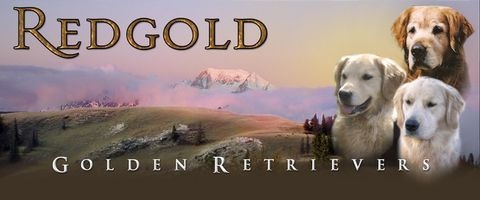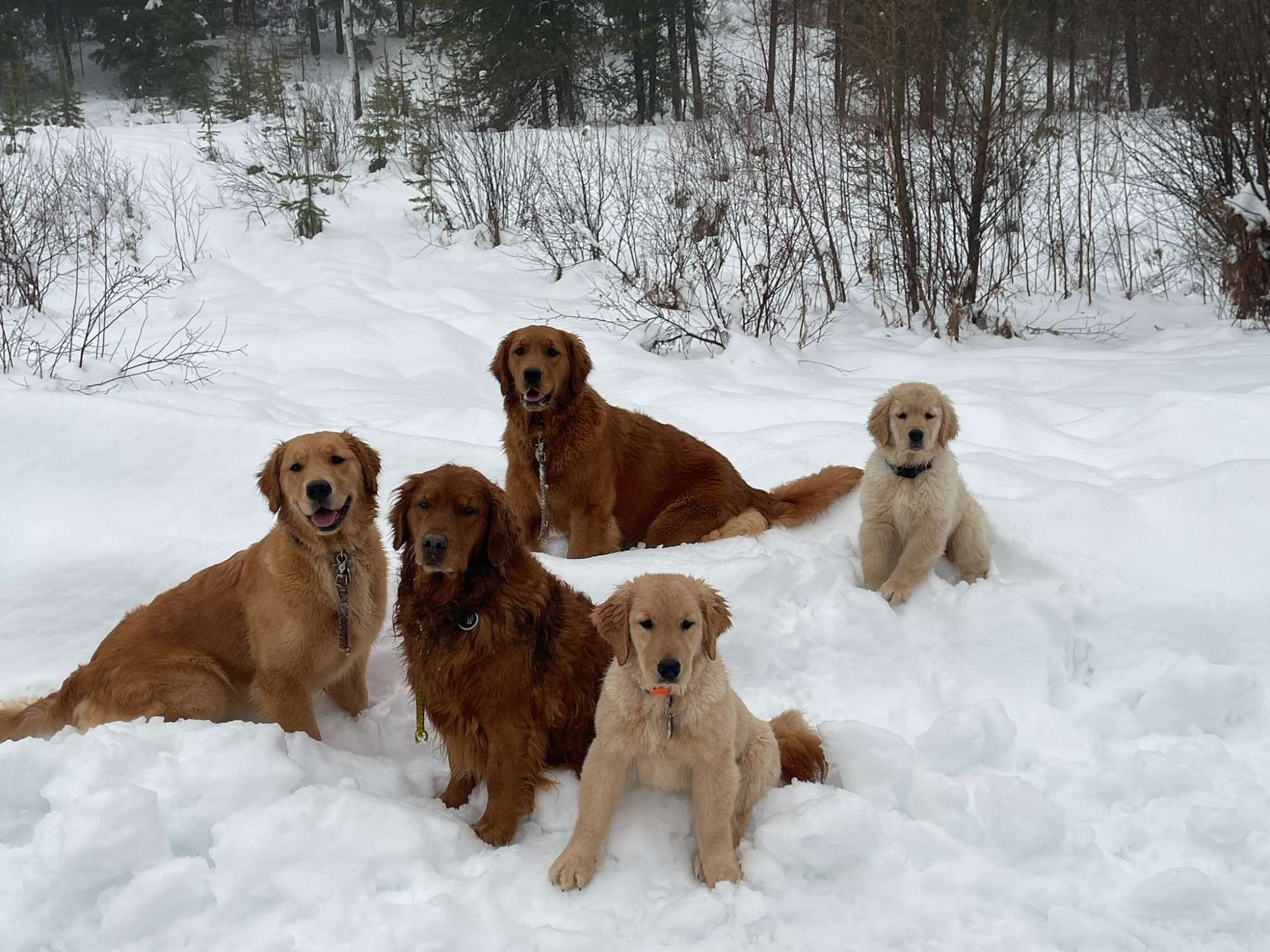About Golden Retrievers
The Golden Retriever is a sturdy, medium-large sized dog. The skull is broad and the muzzle is straight, tapering slightly with a well-defined stop. The nose is black or a brownish black. The teeth meet in a scissors bite. The medium to large eyes are dark brown. The relatively short ears hang down close to the cheeks. When pulled forward the tip of the ear should just cover the eye. The tail is thick at the base with feathering along the underside. Dewclaws may be removed. The water-resistant coat is dense with a firm, straight or wavy outer coat. There is an untrimmed feathering on the underbelly, back of the legs, front of the neck and underside of the tail. Coat color comes in cream to a rich golden.
These are lovable, well-mannered, intelligent dogs with a great charm. They are easily trained and always patient and gentle with children. Charming, devoted and self-assured, they are a popular family dog. Energetic and loving, Golden Retrievers enjoy pleasing their masters, so obedience training can be very rewarding. They excel in competitions. Friendly with everyone, including other dogs, the Golden Retriever has very little, if any, guarding instincts. While unlikely to attack, Goldens make good watchdogs, loudly signaling a stranger's approach. This breed needs to be around people who display leadership to be happy. The Golden Retriever may become destructive and/or high-strung, over-exuberant and distractible if he is lacking in daily mental and physical exercise. Be sure to remain this dog’s firm, but calm, confident, consistent pack leader to avoid behavioral issues. Some of the Golden's talents are hunting, tracking, retrieving, narcotics detection, agility, competitive obedience and performing tricks. These dogs also love to swim.
Height: Males 22 - 23 inches (56 - 61cm) Females 21 1/2 - 22 1/2 inches (51 - 56 cm) Weight: Dogs 65- 75 pounds (27 - 36 kg) Females 60-70 pounds (25 – 32 kg)
They are prone to cancer including mass cell tumors, hip dysplasia, Von Willebrand's disease, heart problems and congenital eye defects. Skin allergies are common in Golden Retrievers and often require veterinary attention. They gain weight easily so do not overfeed.
This breed will do okay in an apartment if sufficiently exercised. They are moderately active indoors and will do best with at least a medium to large yard. What they care about the most is being close to you.
The Golden Retriever needs to be taken on a daily, brisk, off leash walk, jog or run alongside you when you bicycle, where the dog is made to heel beside or behind the person holding the lead, as instinct tells a dog that the leader leads the way and that leader needs to be the human. In addition, they like to retrieve balls and other toys. Be sure to exercise this dog well to avoid hyperactivity.
Life Expectancy - about 10-12 years
The smooth, medium-haired double coat is easy to groom. Comb and brush with a firm bristle brush, paying particular attention to the dense undercoat. Dry shampoo regularly, but bathe only when necessary. This breed is an average shedder.
Originating in the Scottish Highlands in the late 1800s, the Golden Retriever was developed by Lord Tweedmouth, by crossing the original yellow Flat-Coated Retriever with the now extinct Tweed Water Spaniel. He later crossed in the Bloodhound, Irish Setter and more Tweed Water Spaniel. The dogs were called the Golden Flat-Coat and only later were they given the name Golden Retriever. The Golden Retriever is one of the most popular breeds known today, not only as family companions but for obedience competitions, hunting and tracking, as a birddog on both land and in the water, narcotics detection, service dog for the disabled, a guide for the blind and as a therapy dog. The Golden Retriever was first recognized by the AKC in 1925.

